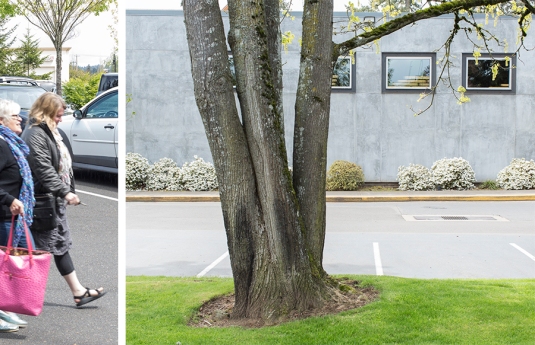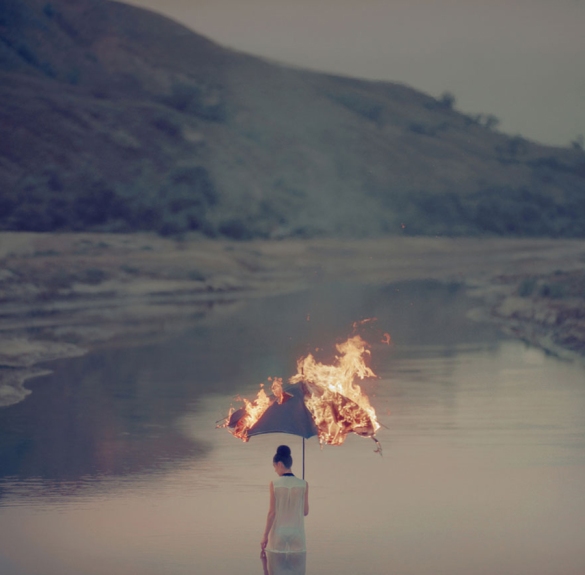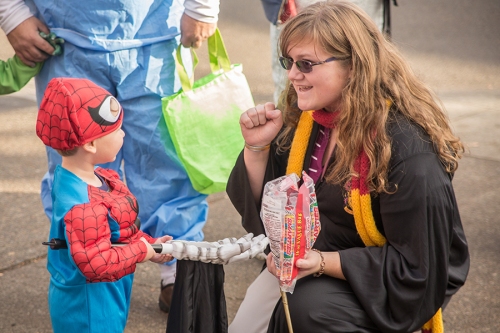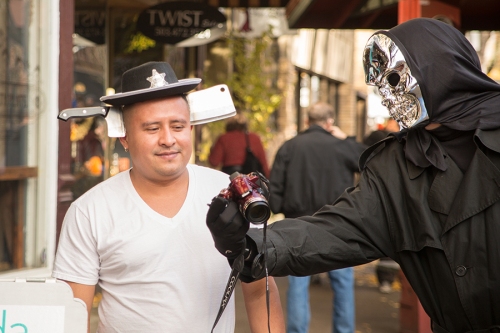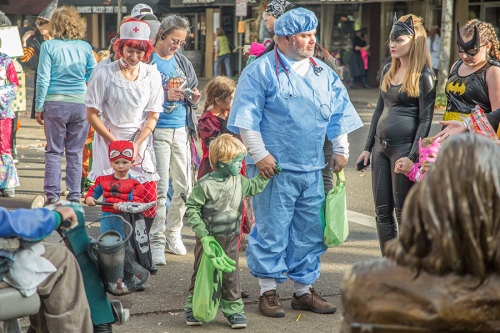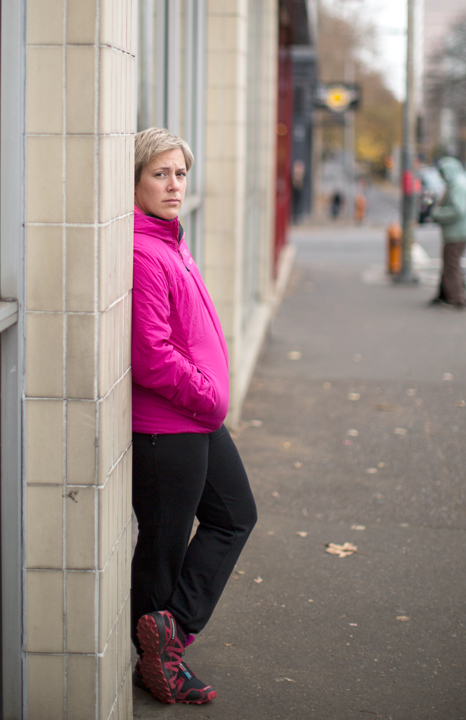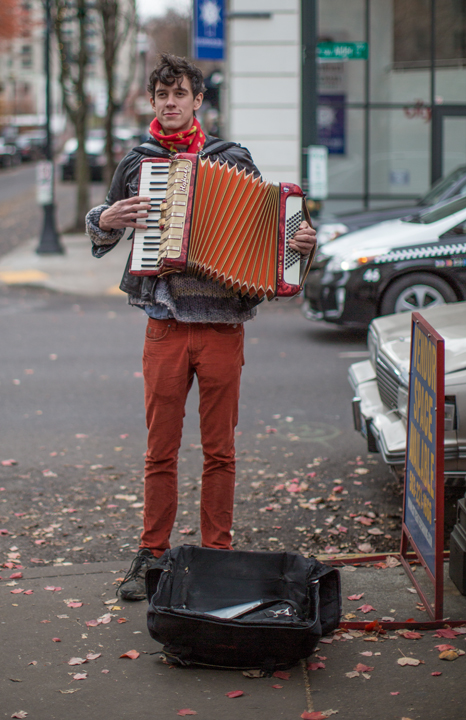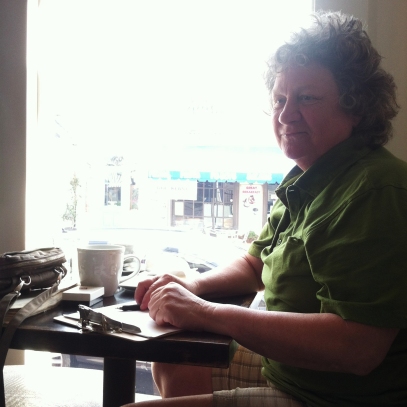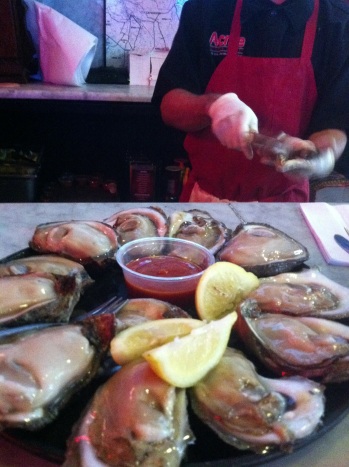This week I thought I’d let you in on a bit of what I’m doing toward my MFA. In one class we are currently studying Hans Hoffman’s theories in his book Search for the Real. It addresses the age old question: what is art? The theories are very involved but one of them includes the idea of relativity in art. For example, if we draw a line on a piece of paper, there is no way to read the story of that line. But if we draw another line, shorter, we know that the first line is a long line. Their stories are told relative to each other. In the photo below (not mine), I’ve illustrated psychic lines, and how they make this image a story.

Brunn Stair Scene from Technicolor Life, 2008 by Bill McCullough
In the first image above, I’m paying homage to Hoffman’s theory of “…bringing structure to an otherwise chaotic lack of organization.”1 In order to interpret the image, we must create relationships. One line is interpreted in relation to another line. The “…dynamics of the line against the compositional boundaries…”2 are established in the mental level. In the image of the wedding party, the lines are psychic lines, all over the place! On the right, the man is looking at the camera, another man is looking down in thought, the woman with him has her eyes closed completely (pause), the bridesmaid by the bride is looking at the bride with concern, while the bride is looking off camera altogether! Phew. No one is touching anyone else and there is no cohesive light source. What holds this image together is our entrance on the far right direct stare by the man and a traveling psychic line to our exit via the bride’s conversation off camera. So cool.
In this next image, we see brilliant reds and blues. This is an example of Hoffman’s push/pull theory.

Several times each day the madam and the girls have tea. from Falkland Road, Bombay, India, 1978 by Mary Ellen Mark
This image is an example of Hoffman’s theory of push/pull. Red is the most dynamic color in human vision and immediately overtakes all other colors in a given composition. That is obvious in this image and is the reason why prostitutes wear red—to catch a man’s attention. The color contrast with blue just enhances this dynamic. Hoffman describes the “…breathing, pulsating, expanding…”3 of space in response to this use of color. These sensations created by the push/pull of red/blue create a plastic tension that plays with space.
1 Module 11
2 ibid.
3 Hoffman, Hans. Search for the Real. Cambridge: MIT, 1967. Print.
If you enjoy my blog, please leave a comment. It’s the only way I know you’re out there and whether I should continue. Thanks!
Next up, my website will be complete soon. I’ll be popping the champagne.

